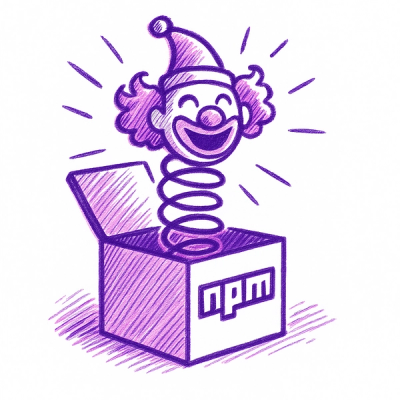
Security News
Crates.io Implements Trusted Publishing Support
Crates.io adds Trusted Publishing support, enabling secure GitHub Actions-based crate releases without long-lived API tokens.
Real-time forex data using IQ Option WebSocket API.



npm i iqoption
Disclaimer: do not use real money with this library.
https://iqoption.com/en/register
const Broker = require('iqoption')
const broker = new Broker({
email: 'example@gmail.com',
password: 'secret123'
})
await broker.login()
console.log('ssid', broker.ssid)
await broker.connect()
console.log('user_id', broker.profile.user_id)
console.log('balance_id', broker.profile.balance_id)
// console.log('client', broker.client)
console.log('balances', broker.balances)
console.log('balance IDs', broker.balances.map(b => b.id))
await broker.subscribe('candle-generated', { active_id: 76, size: 1 })
// Other sizes are 5, 10, 15, 30, etc
broker.on('candle-generated', function (tick) {
console.log(tick) /* => {
active_id: 76,
size: 1,
at: 1658359430627113700, // timestamp in attoseconds
from: 1658359430,
to: 1658359431,
id: 147437049,
open: 0.882379,
close: 0.882379,
min: 0.882379,
max: 0.882379,
ask: 0.88238,
bid: 0.882378,
volume: 0,
phase: 'T'
} */
})
// await broker.unsubscribe('candle-generated', { active_id: 76, size: 1 })
// await broker.disconnect()
Note: All the names, returned values, etc are originally from the WebSocket.
broker.balances is automatically updated on background.
broker.trading.profits is also updated on background and used internally.
Connect without login.
const broker = new Broker({
ssid: 'abcd1234b4c0d1dc9d60e824b3cb71c0'
})
await broker.connect()
// ...
There is a bigInt option available when creating a new Broker instance.
For example, the tick.at is losing precision at the last two digits.
bigInt: false: parse big integers as normal numbers losing precision (default).
bigInt: 'string': parse big integers as string (this is a good option too).
const broker = new Broker({
...,
bigInt: 'string'
})
broker.on('candle-generated', function (tick) {
console.log(tick) /* => {
...
at: '1658359430627113793', // timestamp in attoseconds
...
} */
})
I recommend reading test.js where there is multiple examples.
// AFAIK: type 4 is practice balance (demo)
const practiceBalance = broker.balances.find(b => b.type === 4)
const option = await broker.send('binary-options.open-option', {
user_balance_id: practiceBalance.id, // practice balance
active_id: 76, // is EUR/USD OTC, 816 Bitcoin, etc
option_type_id: 3, // is turbo-option, means expiration is less than five mins
direction: 'call', // or 'put'
expired: 1, // range 1-5 if it's turbo-option
price: 5, // amount to invest
// profit_percent: 85, // this value is calculated internally using broker.trading.profits
returnMessage: true
})
if (option.message) {
throw new Error(option.message)
}
console.log(option)
Note: broker.trading.expiration is used to calculate expired for turbo-option so you only set a range of 1-5.
Sell the option:
const sold = await broker.send('sell-options', { options_ids: [option.id], returnMessage: true })
if (sold.error) {
throw new Error(sold.error)
}
console.log(sold)
You can also let it close by itself.
const mood = await broker.send('get-traders-mood', { instrument: 'turbo-option', asset_id: 1, returnMessage: true })
// mood => { instrument: 'turbo-option', asset_id: 1, value: 0.3098421048120437 }
Every time you send a message, there is normally two responses back:
Let's say you found a command but not need to wait for the response:
returnResult in true will track and wait for the confirmation based on the automatic request_id.
returnMessage in true will track and wait for a response based on the automatic request_id.
Otherwise you would have to track all the messages from the WebSocket, etc.
The default is false for both.
const result = await broker.send('my-magic-command', { returnResult: true })
// result => { success: true }
I think there is no subscription that have a message response.
So don't use returnMessage in true with subscriptions.
At the moment assets are fetch from an outdated file.
const Broker = require('iqoption')
// Get all assets
const assets = Broker.assets()
console.log(assets[1].name) // => 'EUR/GBP'
// Find by name
const asset1 = Broker.assets('EUR/USD (OTC)')
console.log(asset1.active_id) // => 76
// Find by id
const asset2 = Broker.assets(76)
console.log(asset2.name) // => 'EUR/USD (OTC)'
You can inspect the WebSocket from the traderoom of IQ Option.
Maybe you're interested in sending a message not supported by the library.
Normally when sending a message, the data looks like this:
{
name: 'sendMessage',
request_id: '15',
local_time: 123,
msg: {
...
}
}
The library tries to automatically handle common operations like this:
await broker.send('sell-options', { options_ids: [option.id] })
The "raw" equivalent would be:
const option = await broker.send({
name: 'sell-options',
version: '3.0',
body: {
options_ids: [option.id]
}
})
The sell-options message might not be that complicated.
But the library still autocompleting the request_id, local_time, etc.
There is too many commands, three different versions, too many data structures, etc.
Be aware that the IQ Option WebSocket is not documented and doesn't have guarantees.
The same applies for subscribe() and unsubscribe().
Also, if you want to listen to all the messages from the WebSocket:
broker.on('all', function (data) {
console.log(data)
})
I recommend reading the first tests of test.js for more events.
broker.ws.json({
name: 'the-command-name',
request_id: broker.newRequestId(false), // false for messages and true for subscriptions
local_time: broker.localTime(),
msg: { ... }
})
MIT
FAQs
Real-time forex data using IQ Option WebSocket API
The npm package iqoption receives a total of 4 weekly downloads. As such, iqoption popularity was classified as not popular.
We found that iqoption demonstrated a not healthy version release cadence and project activity because the last version was released a year ago. It has 1 open source maintainer collaborating on the project.
Did you know?

Socket for GitHub automatically highlights issues in each pull request and monitors the health of all your open source dependencies. Discover the contents of your packages and block harmful activity before you install or update your dependencies.

Security News
Crates.io adds Trusted Publishing support, enabling secure GitHub Actions-based crate releases without long-lived API tokens.

Research
/Security News
Undocumented protestware found in 28 npm packages disrupts UI for Russian-language users visiting Russian and Belarusian domains.

Research
/Security News
North Korean threat actors deploy 67 malicious npm packages using the newly discovered XORIndex malware loader.